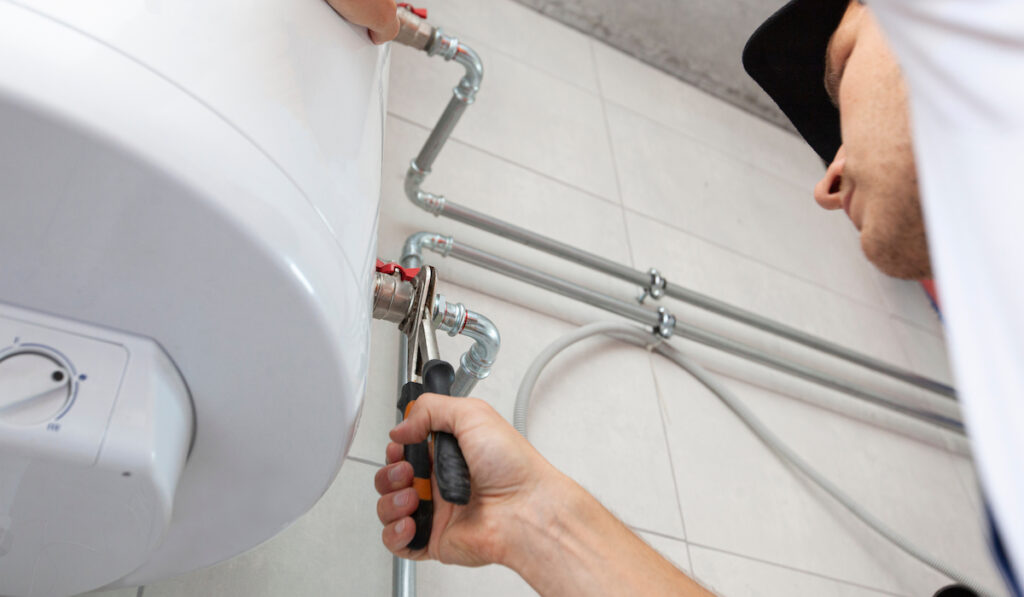Best Practices for Maintaining Your Home's Hot Water SystemMaking Sure Longevity of Your Home's Hot Water System: Maintenance Tips
Best Practices for Maintaining Your Home's Hot Water SystemMaking Sure Longevity of Your Home's Hot Water System: Maintenance Tips
Blog Article
This post which follows about What Kind of Maintenance Do Water Heaters Need? is totally enlightening. Give it a go and make your own personal ideas.

Warm water is vital for day-to-day comfort, whether it's for a rejuvenating shower or cleaning dishes. To guarantee your warm water system runs efficiently and lasts much longer, normal maintenance is crucial. This article offers sensible pointers and understandings on how to keep your home's hot water system to prevent disturbances and expensive fixings.
Introduction
Preserving your home's warm water system might seem complicated, yet with a few basic actions, you can guarantee it operates smoothly for many years ahead. This overview covers every little thing from understanding your warm water system to DIY maintenance suggestions and understanding when to call professional help.
Value of Preserving Your Hot Water System
Routine upkeep not just extends the life-span of your warm water system yet also ensures it operates efficiently. Neglecting maintenance can result in reduced effectiveness, greater power expenses, and even premature failure of the system.
Indications Your Warm Water System Requirements Maintenance
Knowing when your hot water system needs attention can avoid significant concerns. Keep an eye out for signs such as inconsistent water temperature, strange noises from the heater, or rusty water.
Understanding Your Hot Water System
Before diving right into maintenance tasks, it's valuable to comprehend the fundamental elements of your hot water system. Commonly, this consists of the hot water heater itself, pipelines, anode poles, and temperature level controls.
Regular Monthly Maintenance Tasks
Normal month-to-month checks can assist catch minor issues before they intensify.
Flushing the Water Heater
Flushing your water heater removes debris build-up, boosting effectiveness and extending its life.
Checking and Replacing Anode Rods
Anode poles stop rust inside the storage tank. Examining and changing them when worn is crucial.
Examining and Adjusting Temperature Level Setups
Changing the temperature setups makes certain ideal performance and safety.
Do It Yourself Tips for Upkeep
You can carry out several upkeep jobs yourself to maintain your warm water system in leading problem.
Looking for Leaks
Consistently check pipes and links for leakages, as these can result in water damages and greater bills.
Examining Stress Relief Valves
Examining the pressure relief valve guarantees it works properly and avoids too much pressure buildup.
Shielding Pipes
Shielding hot water pipes minimizes heat loss and can conserve energy.
When to Call a Specialist
While DIY upkeep is helpful, some issues need professional experience.
Complicated Concerns Needing Specialist Assistance
Instances include significant leaks, electric problems, or if your hot water heater is regularly underperforming.
Regular Professional Upkeep Conveniences
Expert upkeep can include detailed inspections, tune-ups, and guaranteeing conformity with safety criteria.
Conclusion
Routine upkeep of your home's hot water system is necessary for efficiency, durability, and price savings. By adhering to these tips and understanding when to seek expert aid, you can ensure a trustworthy supply of hot water without unanticipated interruptions.
How to Maintain an Instant Hot Water Heater
Before tinkering with your hot water heater, make sure that it’s not powered on. You also have to turn off the main circuit breaker and shut off the main gas line to prevent accidents. Also turn off the water valves connected to your unit to prevent water from flowing into and out of the appliance. 2. When you’re done, you have to detach the purge valves’ caps. These look like the letter “T” and are situated on either side of the water valves. Doing so will release any pressure that has accumulated inside the valves while at the same time avoid hot water from shooting out and burning your skin. 3. When the purge valves’ caps are removed, you have to connect your hosing lines to the valves. Your unit should have come with three hoses but if it didn’t, you can purchase these things from any hardware or home repair shops. You can also get them from retail stores that sell water heating systems. Read the user’s manual and follow it to complete this task properly. When the hosing lines are connected, open the purge port’s valves. 4. You should never use harsh chemical cleaners or solutions when cleaning your unit. Make use of white vinegar instead. It should be undiluted and you’ll probably use about 2 gallons. 5. Now flush your water heater. This task should probably take about 40 minutes. We can’t give you specific directions for this because the procedure is carried out depending on the type, model and brand of your heater. With that being said, refer to the user’s manual. 6. When you’re done draining the unit, you have to turn off the purge port valves again. Remove the hosing lines that you earlier installed on each of the water valves. Put the valve caps (purge port) back in their respective places and be very careful so as not to damage the rubber discs that are found inside these caps. 7. Now that everything’s back in place, check your user’s manual again to find out how to reactivate your water heating system. 8. Once it is working, turn one of your hot water faucets on just to let air pass through the heater’s water supply pipes. Leave the tap on until water flows smoothly out of it. https://www.orrplumbing.com/blog/2014/september/how-to-maintain-an-instant-hot-water-heater/

I came across that review about How to Maintain Your Water Heater & Prolong its Life while exploring the internet. In case you enjoyed our article please do not forget to share it. I praise you for being here. Don't hesitate to come visit our site back soon.
Website Report this page